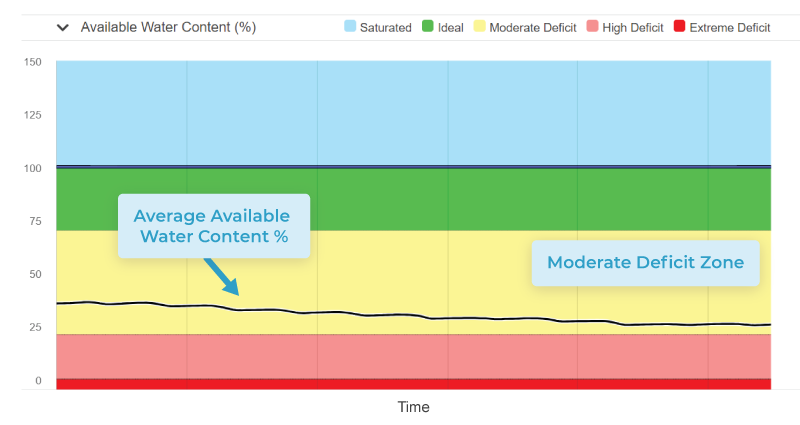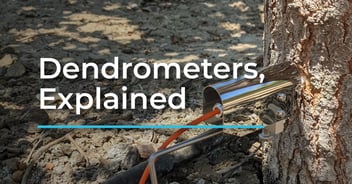Regulated Deficit Irrigation Strategies For Managing Veraison in Table Grapes
Achieving the perfect balance of flavor and ripeness in table grapes requires skilled management of veraison timing, a crucial but challenging process for grape growers.
In this blog, we’ll explore factors that affect the onset of veraison and regulated deficit irrigation strategies you can use to efficiently manage this process.
 Grapes after veraison began
Grapes after veraison began
Understanding Veraison: A Precise Timing
Veraison is a stage of development in grapes where the color begins to turn and the fruit begins to change from sour and astringent to sweet and flavorful.
The value of table grapes is largely dependent upon a variety going through veraison at the right time so that the grapes are ready for picking and sale at the ideal time of the season.
One might wonder, what triggers veraison in table grapes? The answer lies in stress.
For our wine friends, there is usually plenty of water stress to trigger veraison. But, when you’re trying to grow large, juicy grapes for fresh consumption, it is possible to be too generous with water and subsequently delay veraison.
How to Trigger and Manage Onset of Veraison in Table Grapes
The soil in which table grapes grow significantly impacts the onset of veraison.
Even when the same grape varieties are planted, they can react differently in different soils. To manage these differences effectively, keeping a close eye on soil moisture levels becomes essential.
This is where soil moisture monitoring tools, such as the Semios soil moisture graphs, can help. These graphs visually represent soil moisture levels, helping growers identify the stress levels their grapevines are experiencing. In Semios’ case, the soil moisture graphs also split different stages of water stress into color-coded regions to simplify decision-making.
 Example of the soil moisture graph on the Semios platform. The black line shows the average available water content. You can see the soil moisture levels drop almost to the bottom of the yellow “Moderate Deficit” region on the graph.
Example of the soil moisture graph on the Semios platform. The black line shows the average available water content. You can see the soil moisture levels drop almost to the bottom of the yellow “Moderate Deficit” region on the graph.
Our recommended strategy to trigger veraison in table grapes:
- Gradually reduce water applications by about 70% starting around two weeks before you want veraison to begin.
- Allow the soil moisture levels to drop almost all the way to the bottom of the yellow “Moderate Deficit” region.
- After you reach that level of water stress, apply enough water to refill the soil. Then, allow the soil to dry out again until the soil moisture levels reach near the bottom of the yellow “Moderate Deficit” region.
- Continue this cycle of stressing your grapevines and refilling the soil until you see the onset of veraison. At this point, you can resume normal irrigation.
It's important to recognize that different fields and soils will respond at varying rates to deficit irrigation. Some may dry out quickly, requiring less than a week to reach the desired stress level, while others may need up to three weeks.
As you become more familiar with the way your fields react to deficit irrigation, you’ll be able to plan with greater precision in subsequent years.
Conclusion
Mother Nature is full of surprises, and each year's weather can be different from the last. This can make triggering veraison in table grapes at the right time in the season more challenging.
However, since water stress can help trigger the onset of veraison in grapes, soil moisture sensors are a powerful tool in gaining valuable insights into your soil's condition so you can adjust your irrigation practices accordingly.
By keeping detailed notes and learning from each growing season, grape growers can get better at managing veraison, enhancing the yield and quality of their table grapes year after year.



